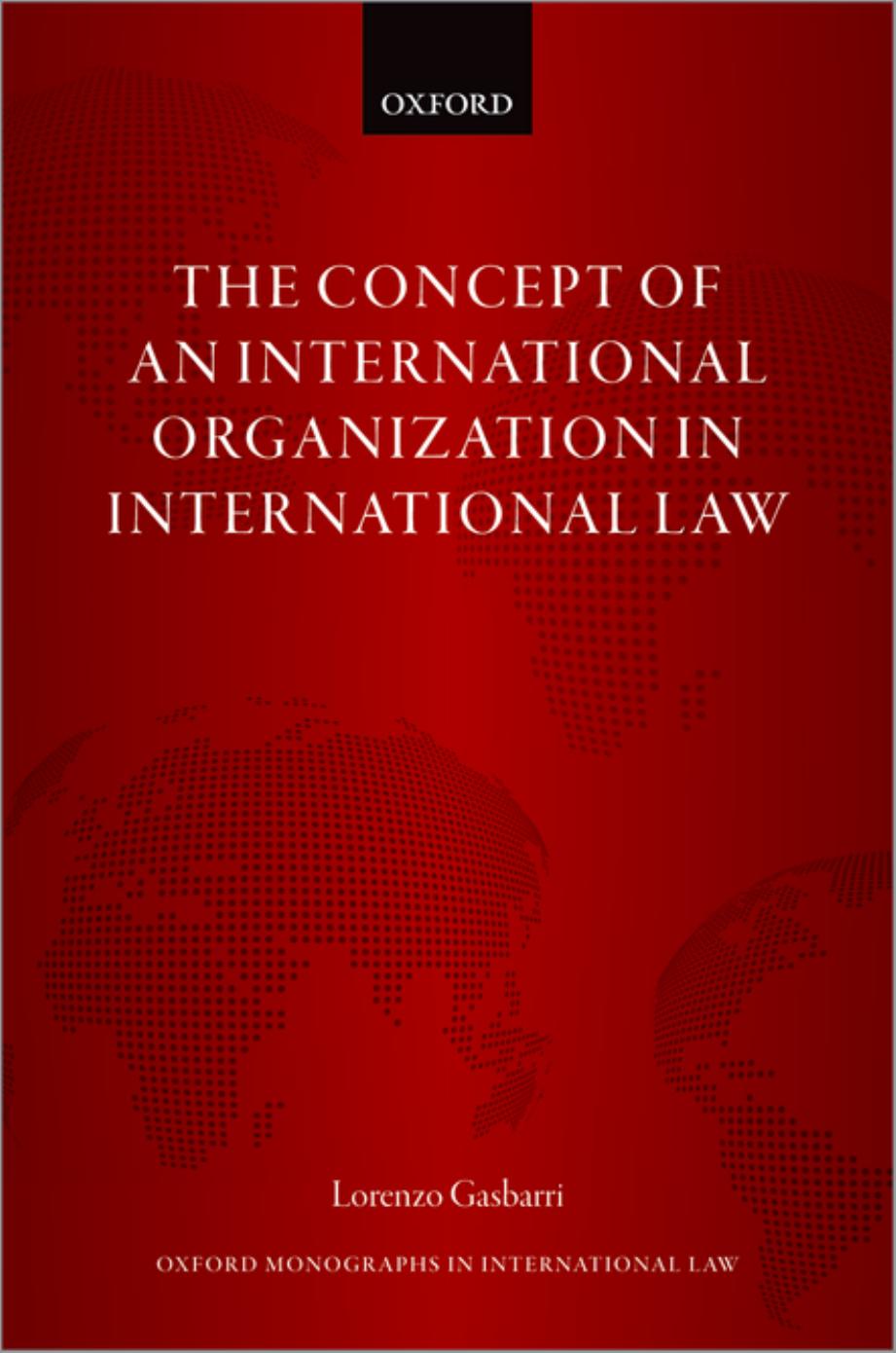The Concept of an International Organization in International Law 1st edition by Lorenzo Gasbarri 9780192648907 019264890X
$70.00 Original price was: $70.00.$35.00Current price is: $35.00.
Instant download Concept of an International Organization in International Law The Wei Zhi after payment
Concept of an International Organization in International Law 1st edition by Lorenzo Gasbarri – Ebook PDF Instant Download/Delivery: 9780192648907, 019264890X
Full dowload oncept of an International Organization in International Law 1st edition after payment

Product details:
• ISBN 10:019264890X
• ISBN 13:9780192648907
• Author:Lorenzo Gasbarri
The Concept of an International Organization in International Law
Concept of an International Organization in International Law 1st Table of contents:
1. Introduction
1.1 Conceptualizing versus Defining
1.2 Four Concepts of an International Organization
1.3 Terminology
1.4 Why it Matters
1.5 The Structure of the Book
Part I. The Four Concepts of an International Organization
2. Functionalism
2.1 The Rules of International Organizations as International Law
2.2 The Limits of Functionalism
2.2.1 The breach of institutional rules under functionalism
2.2.2 Countermeasures and sanctions under functionalism
2.3 Concluding Remarks
3. Constitutionalism
3.1 The Rules of International Organizations as Internal Law
3.2 The Limits of Constitutionalism
3.2.1 Lex specialis derogat legi generali
3.2.2 The attribution of conduct
3.3 Concluding Remarks
4. Informalism
4.1 The Rules of International Organizations as Informal Law
4.2 The Limits of Informalism
4.2.1 Employment relationships
4.2.2 Global administrative law
4.3 Concluding Remarks
5. Exceptionalism
5.1 The Rules of International Organizations as ‘Exceptions’
5.2 The Limits of Exceptionalism
5.2.1 The exceptionalism of the EU
5.2.2 The exceptionalism of the OSCE
5.3 Concluding Remarks
6. Interim Conclusions
6.1 Al-Dulimi and the Competing Concepts of an International Organization
6.1.1 Admissibility ratione personae: attribution of conduct
6.1.2 Merits: coexistence or conflict of obligations?
6.1.2.1 The Chamber: equivalent protection and constitutionalism
6.1.2.2 The Grand Chamber: harmonic interpretation and functionalism
6.2 In the Following Pages
Part II. International Organizations as Dual Entities
7. A Venture into Legal Theory
7.1 The Concept of Legal System Applied to International Organizations
7.2 The Point of View and Hart’s Rule of Recognition
7.3 Santi Romano’s Institutionalism
7.4 The Dual Legal Character of International Organizations
7.5 The Definition of an International Organization in International Law
7.6 Concluding Remarks
8. The Dual Legal Nature in Practice
8.1 Constitutive Instruments
8.2 General Principles
8.3 Customary Law
8.4 Institutional Practice
8.5 Secondary Norms
8.5.1 The Mandate
8.5.2 UN international territorial administration
8.5.3 UN Security Council anti-terrorism resolutions
8.5.4 EU secondary norms
8.5.5 ICAO regulations
8.6 Judicial Decisions
8.7 Treaties with Members and Non-members
8.8 Concluding Remarks
9. The Law of Treaties
9.1 International Organizations in the Law of Treaties
9.1.1 The 1969 Vienna Convention
9.1.2 The 1986 Vienna Convention
9.1.3 L’Institut de Droit International
9.2 The Capacity to Conclude Treaties on the Basis of International and Institutional Law
9.3 Member States are neither Parties nor Third Parties in the Treaty Concluded by the Organization
9.3.1 Effects of the dual legal nature in practice: IUU fishing and obligations binding EU member states
9.4 Concluding Remarks
10. Validity and Ultra Vires Acts
10.1 The Either/Or Paradigm Applied by the PCIJ and the ICJ
10.1.1 Decisions adopting a functionalist perspective
10.1.2 Decisions adopting a constitutional perspective
10.2 The Dual Legal Character of Ultra Vires Acts
10.3 The Rules of the Organization as a Limit of Validity
10.3.1 Invalidity of the treaty caused by the violation of a rule of the organization
10.4 Customary International Law as a Limit of Validity
10.4.1 The validity of UN Security Council resolutions encroaching on human rights
10.5 Concluding Remarks
11. International Responsibility
11.1 International Organizations in the Law of International Responsibility
11.1.1 L’Institut de Droit International
11.1.2 The International Law Commission
11.1.3 The International Law Association
11.2 Dual Attribution of Conduct and Shared Responsibility
11.2.1 The legal basis of dual attribution in the law of states’ responsibility
11.2.2 Applicability to international organizations and member states
11.2.2.1 Dual attribution via institutional links: article 4 ARSIWA and article 6 ARIO
11.2.2.2 Dual attribution via factual links: effective control (article 7 ARIO)
11.2.2.3 Exclusion of dual attribution because the organ is ‘place at the disposal’ (article 6 ARSIWA) or ‘fully seconded’ (commentary article 7 ARIO)
11.3 The Effects of Dual Attribution
11.4 Concluding Remarks
12. Conclusion
People also search for Concept of an International Organization in International Law 1st:
concept of an international
the concept of an international organization in international law
third concept an international journal of ideas
what are the key concepts of international business
concept international transportation


